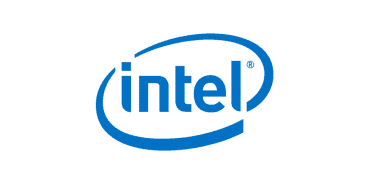
As teams seek maximum gains from their Value Stream Management initiatives, DPM has emerged as a fundamental approach – adding value to the streams.
Nothing makes your digital transformation at scale more successful than Value Stream Management (VSM). That’s why companies in all sectors are quickly adopting it.
At a high level, VSM is a way to maximize customer value by optimizing how you build and deliver products and services. Leaders forge roadmaps with fine-tuned cross-functional teams to develop strategies that provide the best possible business outcomes.
But before diving into any VSM initiatives, there’s another concept to embrace: Digital Product Management (DPM). DPM is a strategic approach to ensure investments yield maximum returns.
The Difference Between Project and Product Management
Initially, DPM requires reorientation from traditional project management to product management. While the two terms sound similar, they are not.
When teams are project-focused, they fund one-off efforts—working through a series of bureaucratic steps, such as project registration, justification, and funding. Then, ironically, once a project is complete, the process starts over again.
On the other hand, when teams take a product-focused approach, they’re funding strategic initiatives aligned with customer needs and backed by dedicated teams.
See also: Tapping into the Potential of Data Products in 2023
In a Digital Age, DPM is Essential
As enterprises take on digital transformations to run more like technology companies, business leaders have to rethink their plans. The transition from projects to products is a logical outcome, which is why this move is so widespread. One recent survey found that 74% of organizations are shifting from project management to product management.
Moving from project to product management represents a fundamental shift; some 90% of respondents said DPM helps with the transition. When you look at companies’ top objectives, customer needs top the list: No. 1 is delivering customer value (56%), and No. 2 is improving product quality (52%).
Fundamentally, DPM supports these key initiatives. As a result, teams can quickly gauge customer needs and optimize entire work streams to maximize customer value.
The move to DPM has been profound for one U.S. automaker. While the firm used to manage work as projects, that has changed. Technology is such an integral part of how cars are made and used today that we now euphemistically call automobiles “computers on wheels.” As a result, the automaker took significant strides toward understanding how to better serve its customers, including developing a line of electric vehicles by moving to DPM. For example, deeper collaboration around customer feedback for new products made teams way more efficient.
How DPM Fuels VSM
With DPM, you can begin to optimize operational and delivery value streams. Pursuing VSM initiatives with a solid DPM implementation comes with a slew of advantages:
- No more silos. Over the years, there’s been a lot of talk about breaking down silos, particularly between business and engineering teams. With DPM, teams are making it happen. In the same survey, 91% said DPM improves communication between business leaders and development teams.
- Greater transparency. Those responsible for funding products need to understand how money is spent and whether investments deliver expected outcomes. DPM equips executives with a 360-degree view to assess, track, and articulate the impact of their investments.
- Adapt to change. DPM enables teams to work from well-understood roadmaps while more easily accommodating on-the-fly changes. Through DPM, teams can better understand the impact of changes, intelligently weighing the tradeoffs. Given this, it’s not surprising that 89% said adopting DPM makes achieving digital transformation objectives easier.
- Enhanced ROI. By employing DPM to power Value Stream Management initiatives, teams can enhance investments for maximum impact. Plus, they can easily demonstrate the ROI of the investments made.
An executive at an insurance company recently said, “dashboards are the great leveler.” With DPM, leaders no longer feel like they’re in the dark. Instead, developers see how their work contributes to top-level strategies. And everyone feels more engaged with a better understanding of what can be accomplished.
It’s important to remember that DPM initiatives aren’t one-and-done events. Instead, they’re a journey, often part of a more significant business transformation. However, that doesn’t mean results aren’t achieved in the near term. Indeed, DPM has quickly proven its value across many organizations, with 94% of businesses saying their DPM initiatives are successful.
Conclusion To realize their digital transformation objectives, organizations continue to grow increasingly reliant on Value Stream Management. As teams seek maximum gains from their VSM initiatives, DPM has emerged as a fundamental approach – adding value to the streams. DPM helps teams ensure their digital products and services deliver the most extraordinary customer joy and significant business ROI.





























